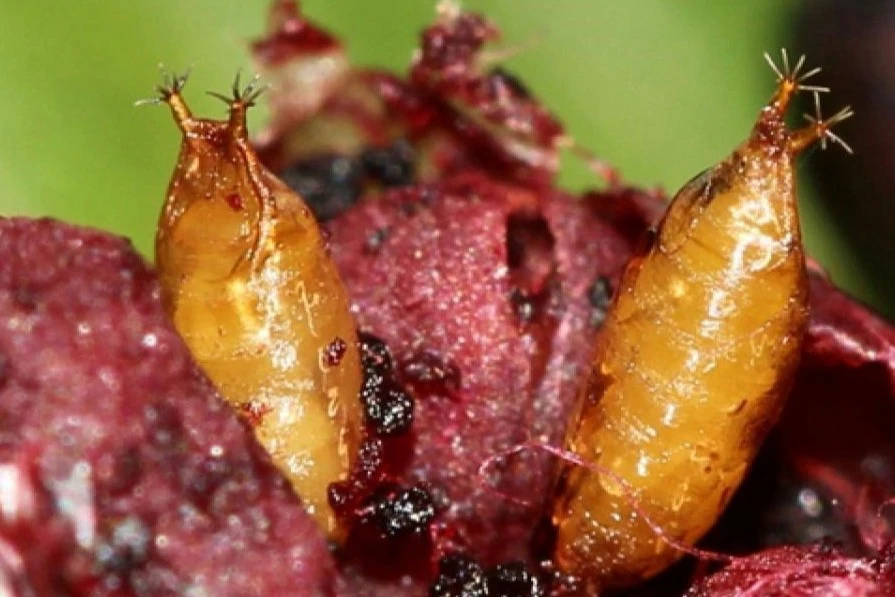In recent years, the cherry has positioned itself as the flagship product of the Chilean agricultural campaign, covering thousands of hectares across the country to satisfy a giant: China. In recent days, however, a surprising earthquake has shaken the foundations of the sector, dark forecasts have arrived, and movements have been activated to analyze the future of the industry.
What was anticipated to be a record season, with an impressive 59% growth in exports to the vast Chinese market—which sees cherries as a highly symbolic product of prosperity, affection, and trust to celebrate the New Year in that country—has turned into a harsh “reality check,” according to industry operators.
The excess supply has saturated the market and caused a 50% price drop, which no one had predicted. The situation has alarmed the Chilean industry of ambassadors in Asia. “Let’s not turn one season’s moment into an apocalypse; we must look at five years as the point of observation,” commented Minister of Agriculture Esteban Valenzuela yesterday.
Antonio Walker, president of the National Agriculture Society (SNA), stated that although it is still too early to draw conclusions—since the most important event has yet to arrive: the Chinese New Year at the end of this month—the situation “has led to sales being well below the expectations we had for this year.”
The cherry, the star fruit of Chile. The cherry business in the country has grown exponentially in a few years, especially thanks to the Chinese market, which accounts for over 90% of seasonal exports. And the figures are clear. According to the Chilean Cherry Committee, in 2013, the country had 16,242 hectares planted with cherry trees.
For Walker, the price drop “is serious because the cherry industry is very large; it represents about three billion dollars in exports, with 115 million boxes, more than 70,000 hectares planted in Chile, and over 350,000 people working in the sector. This situation has a significant economic and social impact.
Juan Pablo Subercaseaux, agronomist and academic at the Faculty of Agronomy and Natural Systems at UC, and also a cherry producer, explained that “something particularly rare has happened with cherries in the fruit industry: the growth phase and good prices have lasted for a long period, about 30 years.”
The harvest season, moreover, is very short, with 85% of production occurring between November 5 and December 25,” he said. Causes of the earthquake Agricultural sectors state that the main factors explaining this scenario are the large volume of fruit the market has received.
Walker explained that in addition to the excess supply, there are two other variables that explain this situation. “In China, there is less money, and the presence of a respiratory virus has made people more cautious about going to markets. This has led to sales being well below the expectations we had for this year.”
For Víctor Catán, president of the Federation of Fruit Producers of Chile (Fedefruta), this situation was nevertheless foreseeable. “The alarm was raised some time ago; when you cover a single market (China) and that market deteriorates, logically, there are no other alternatives to send the fruit.
Marcos Mora, agronomist and academic at the Faculty of Agronomic Sciences at the University of Chile, agrees that this situation has been developing for a long time. In his opinion, these are the consequences of focusing entirely on a single market.
What to do? The SNA president stated that one solution is to empower an entity like the Cherry Committee so that producers are aligned and disciplined in following the rules of the game.
“It is essential to conquer new markets like India, the Association of Southeast Asian Nations (ASEAN), the Middle East, and North Africa, where there are significant growth opportunities,” he said.
Marcos Mora, in the same vein, emphasized that “understanding that the situation is complex, in this negative context, some solutions include opening new markets and improving product quality.”
However, 78,000 hectares are already planted, but of all these hectares, only 50,000 are currently producing. In other words, even if we do not plant a single additional hectare of cherries in Chile, by 2030, we will produce 200 million boxes.
“We cannot continue exporting varieties, sizes, or fruits that do not withstand the journey. Nor can we export varieties that do not meet good organoleptic conditions (flavor) or lack the necessary resistance to reach the market in optimal conditions,” Walker emphasized.
The bleak forecasts have led to a key meeting that will take place today at around 9:00 a.m. ProChile—an agency dedicated to promoting Chilean products abroad—has convened a meeting with various unions (SNA, Fedefruta, and Frutas de Chile).
Source: Emol.com
Image: China Daily
Cherry Times - All rights reserved












